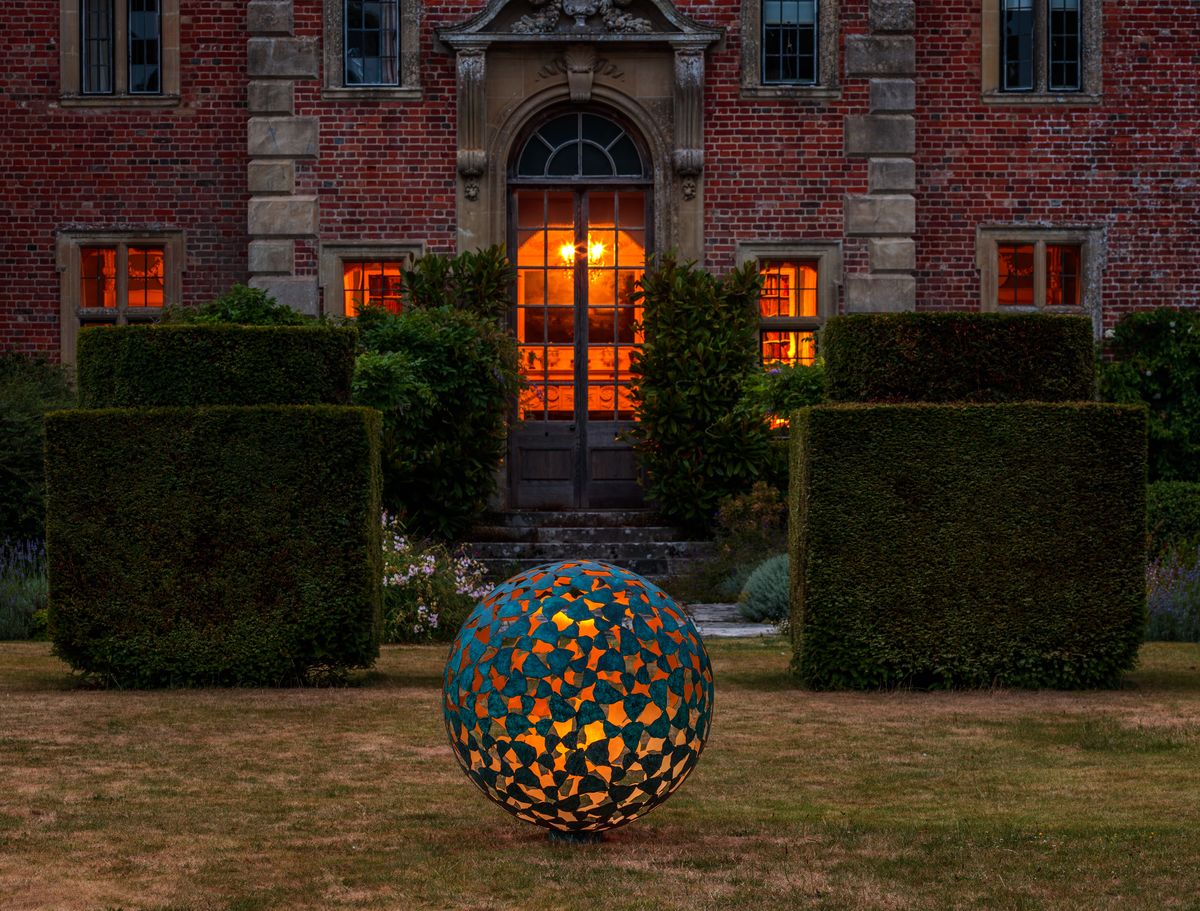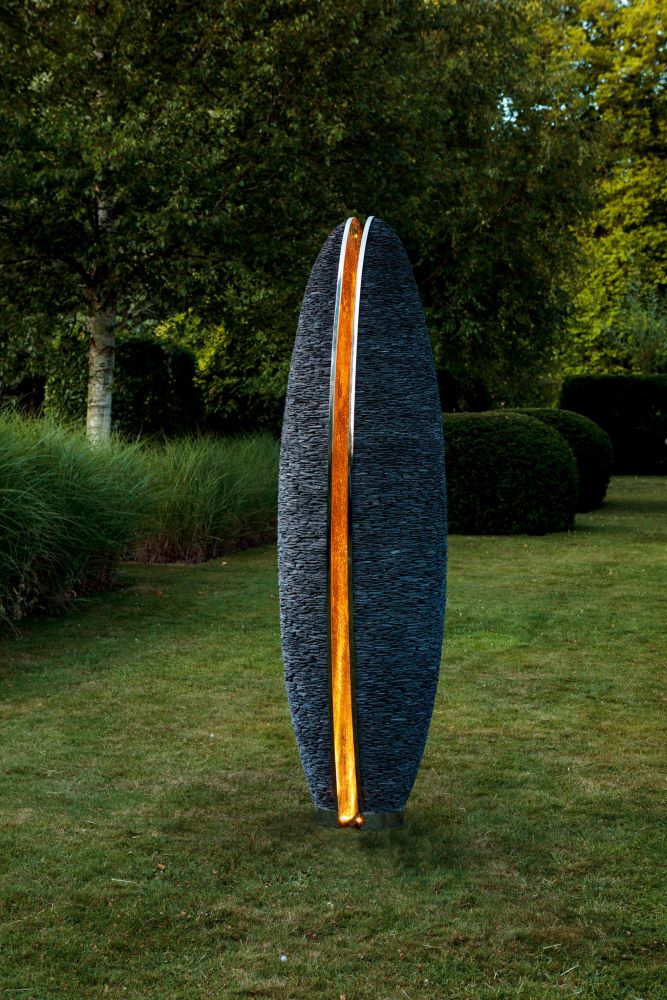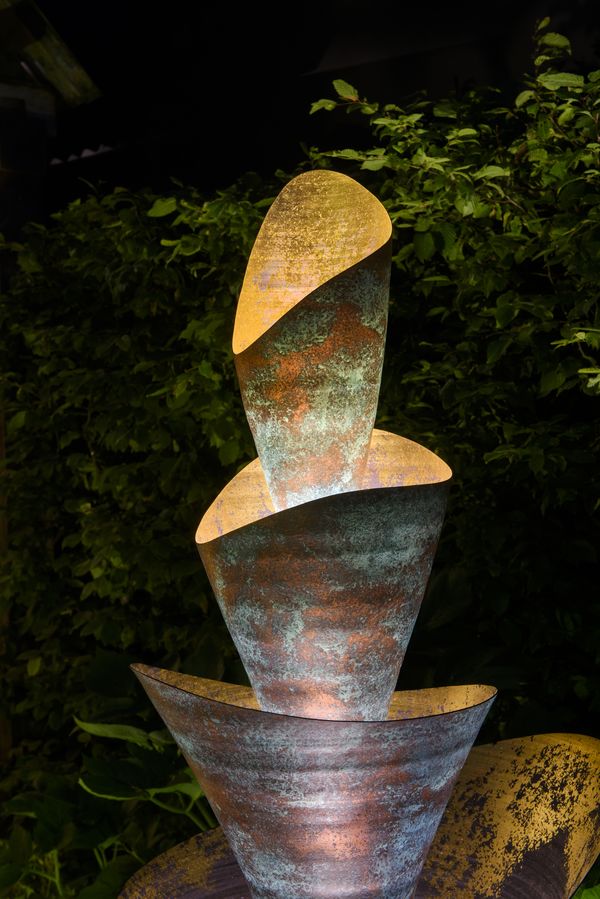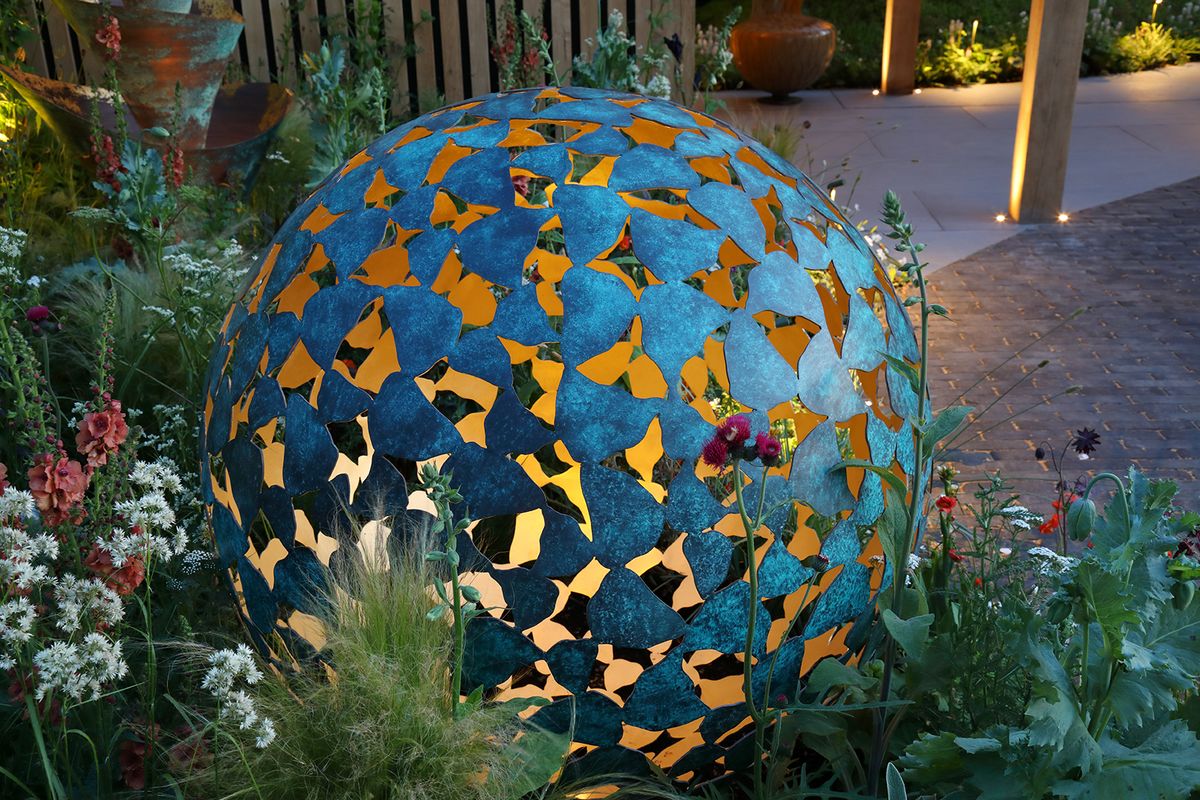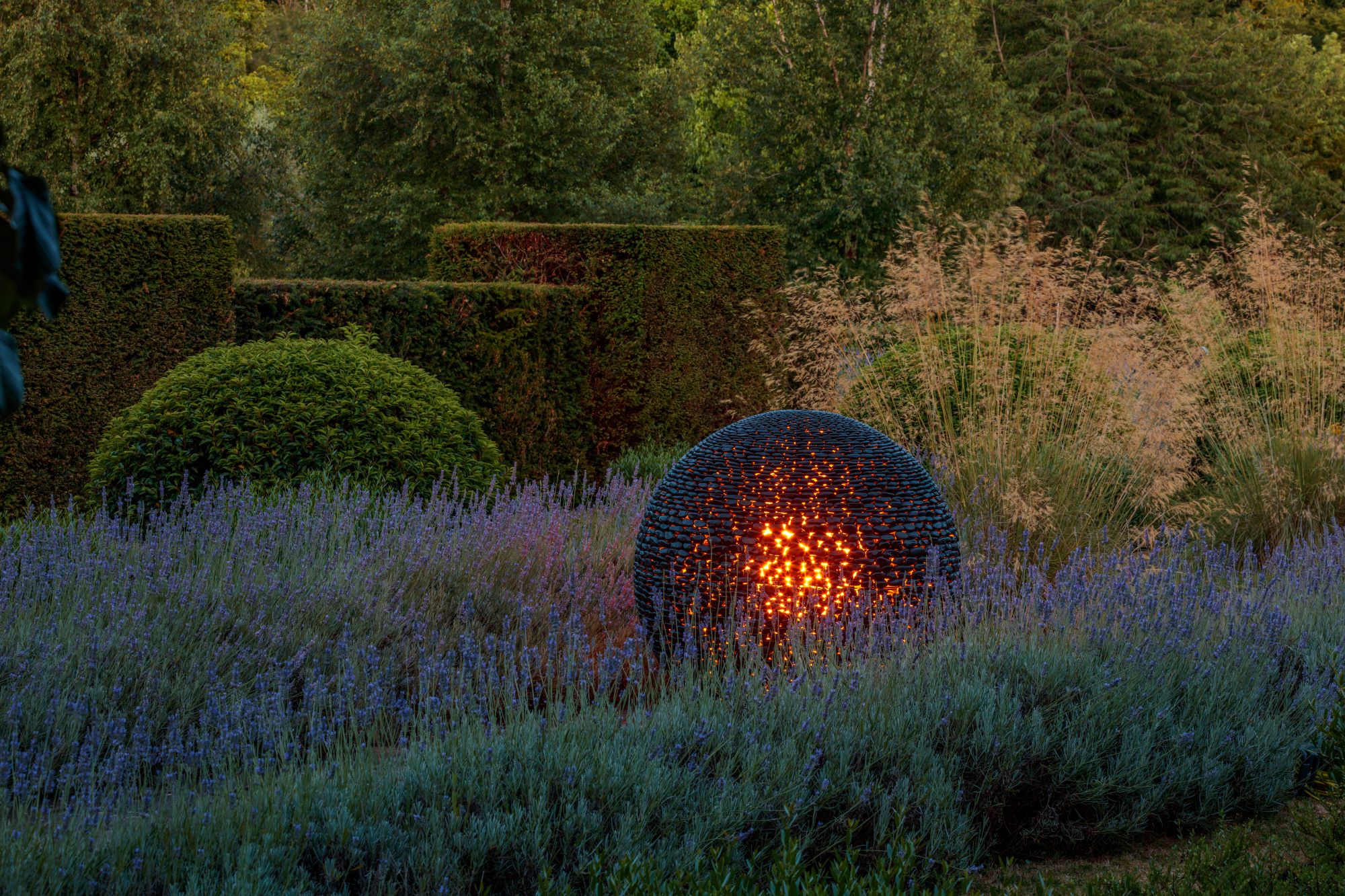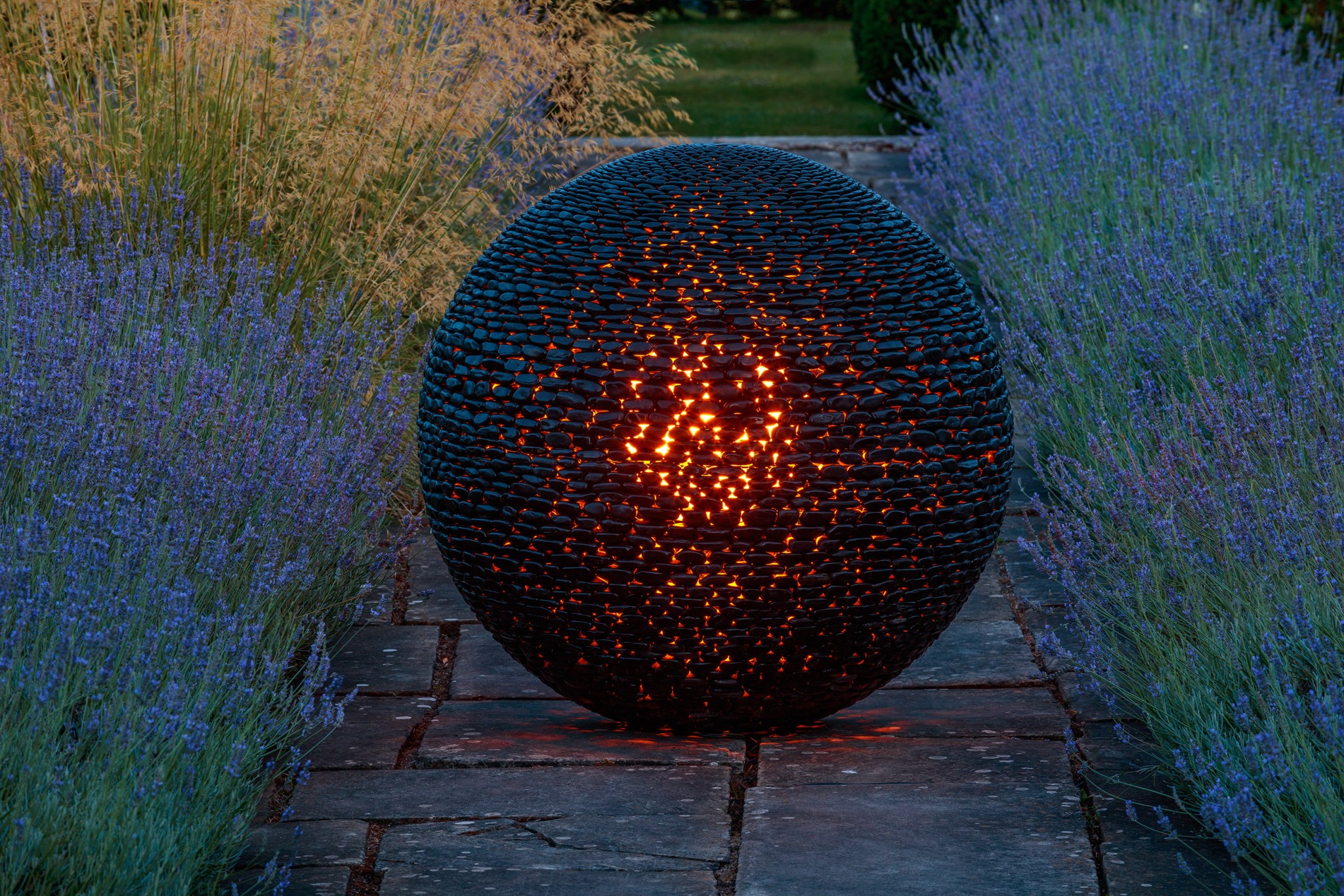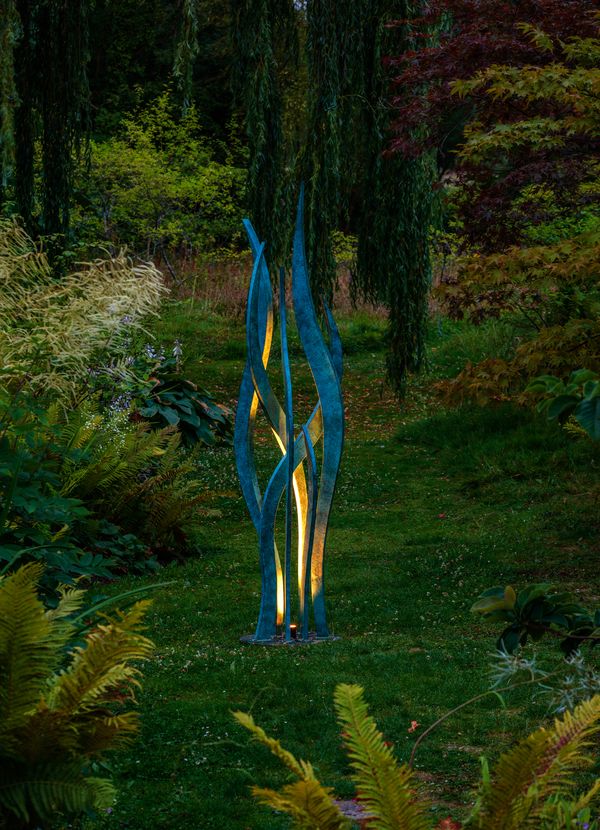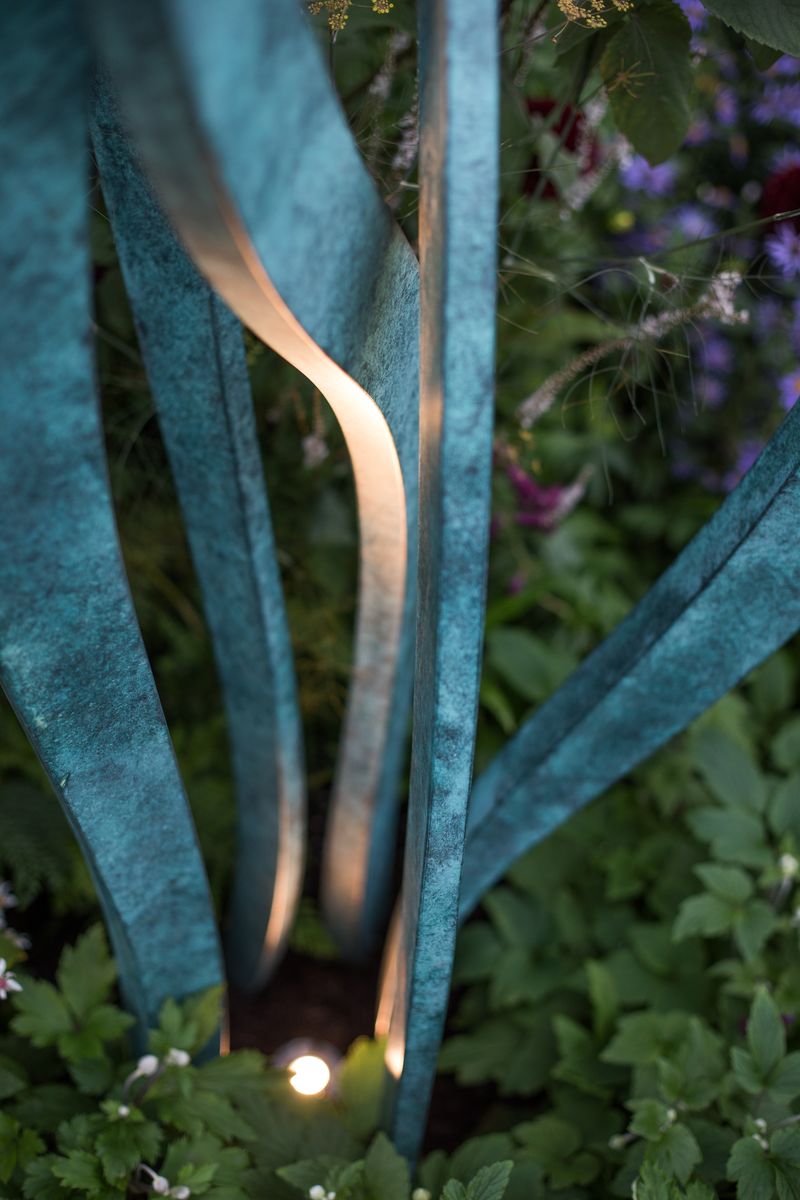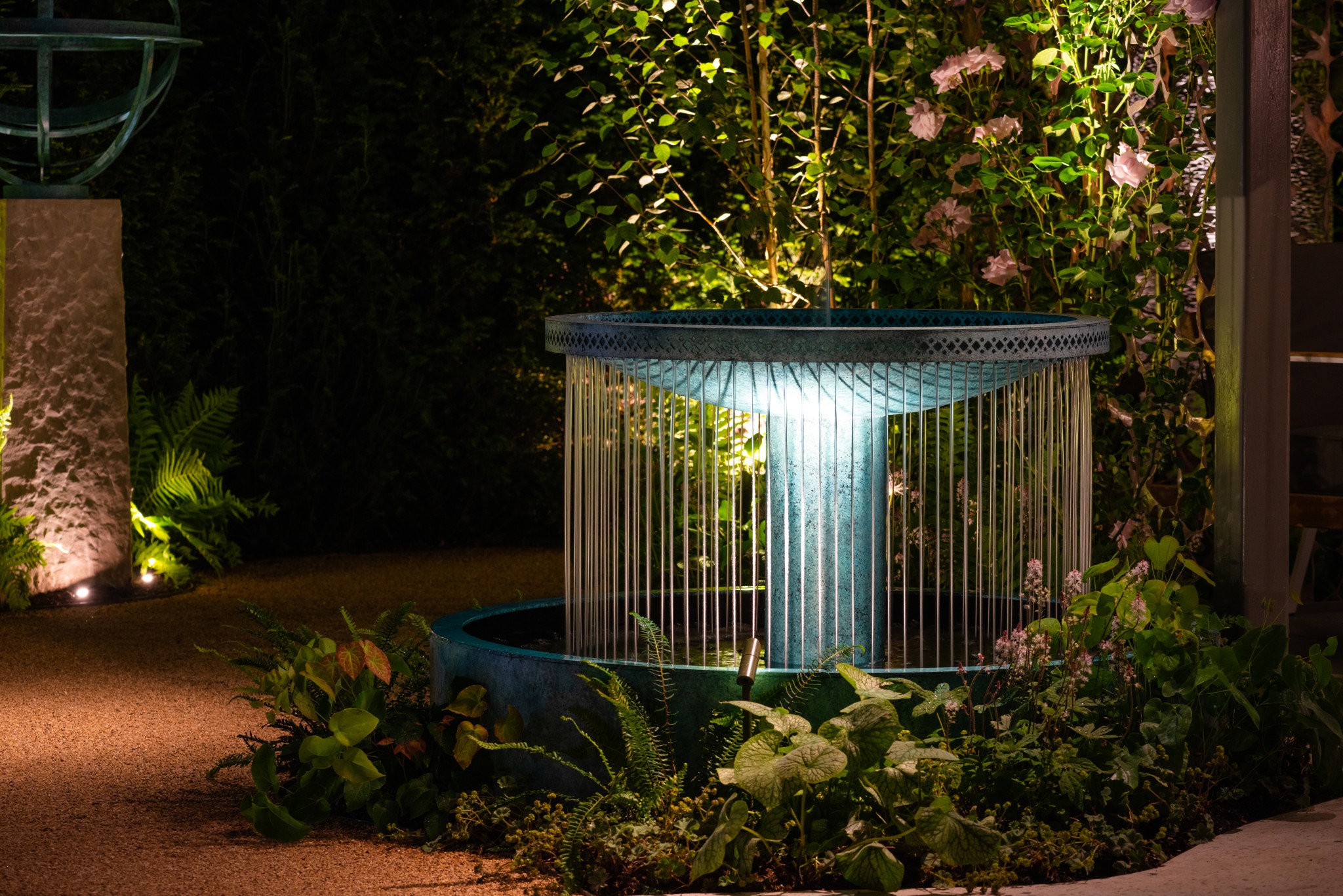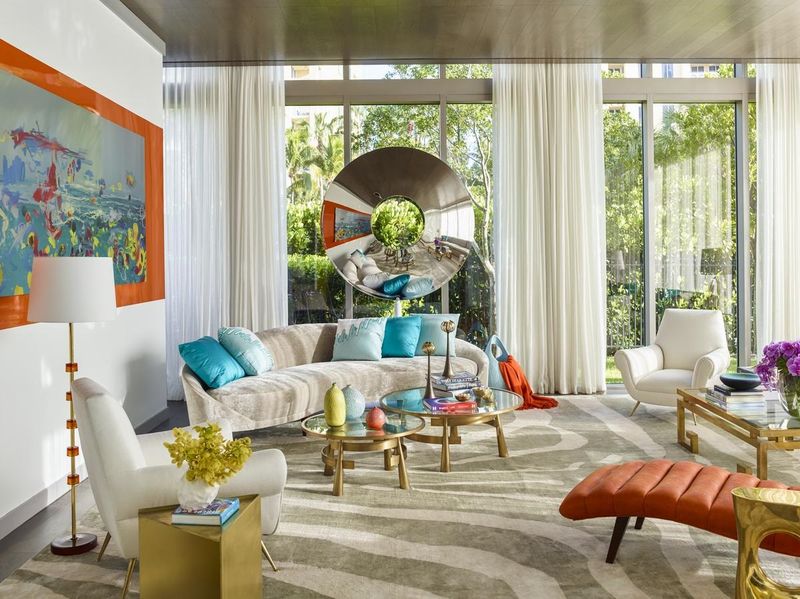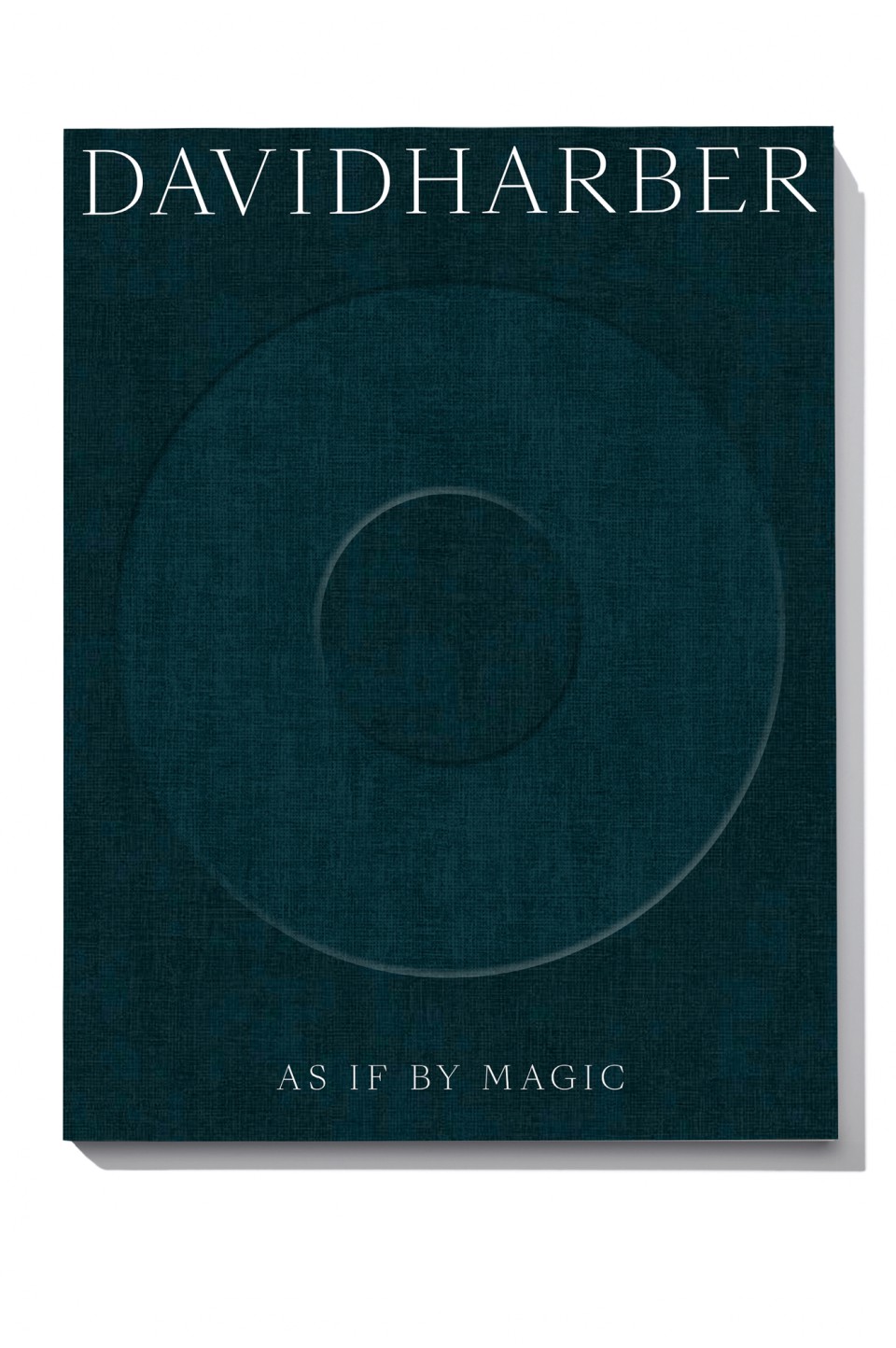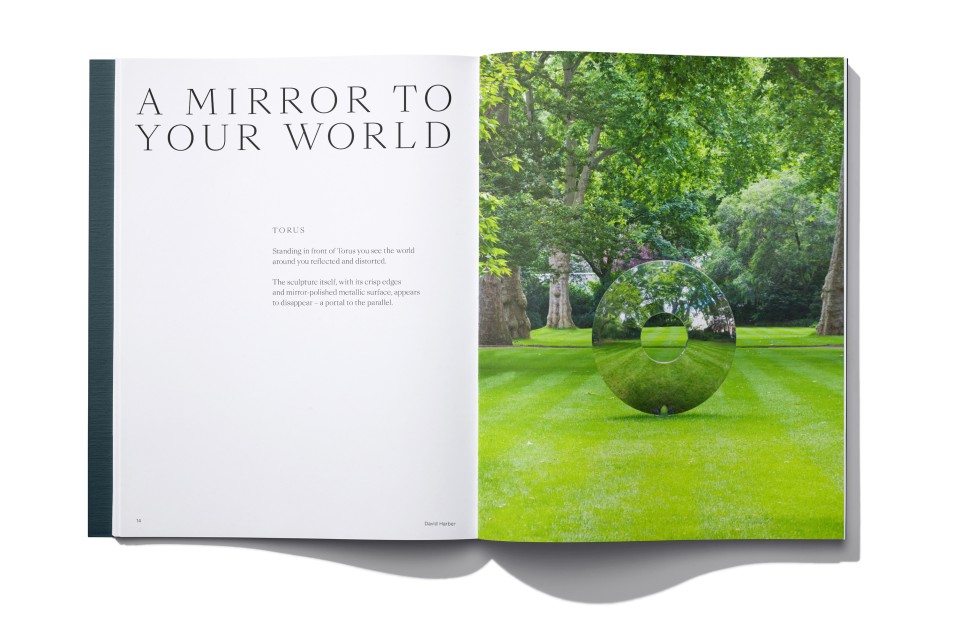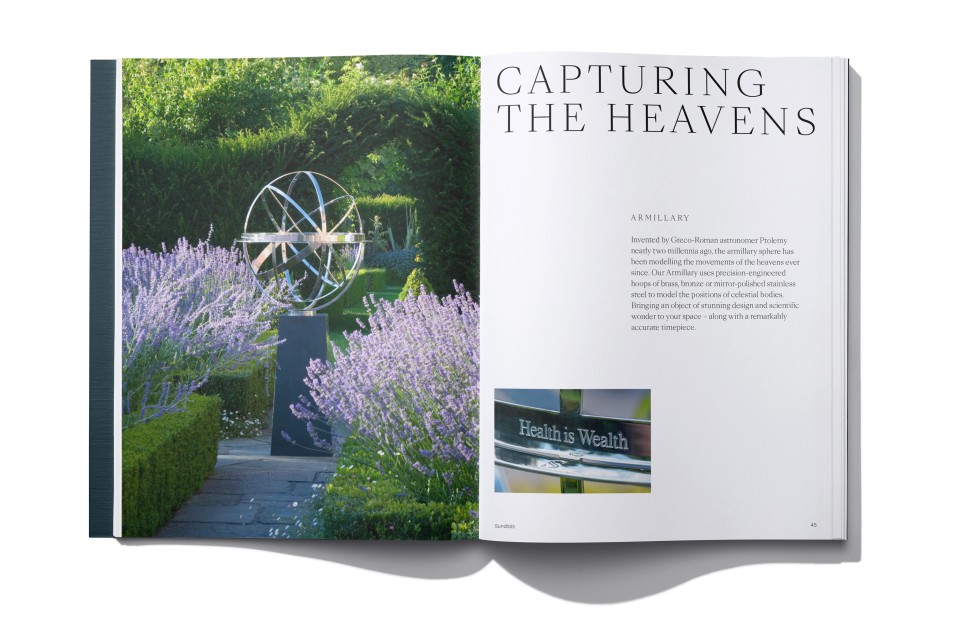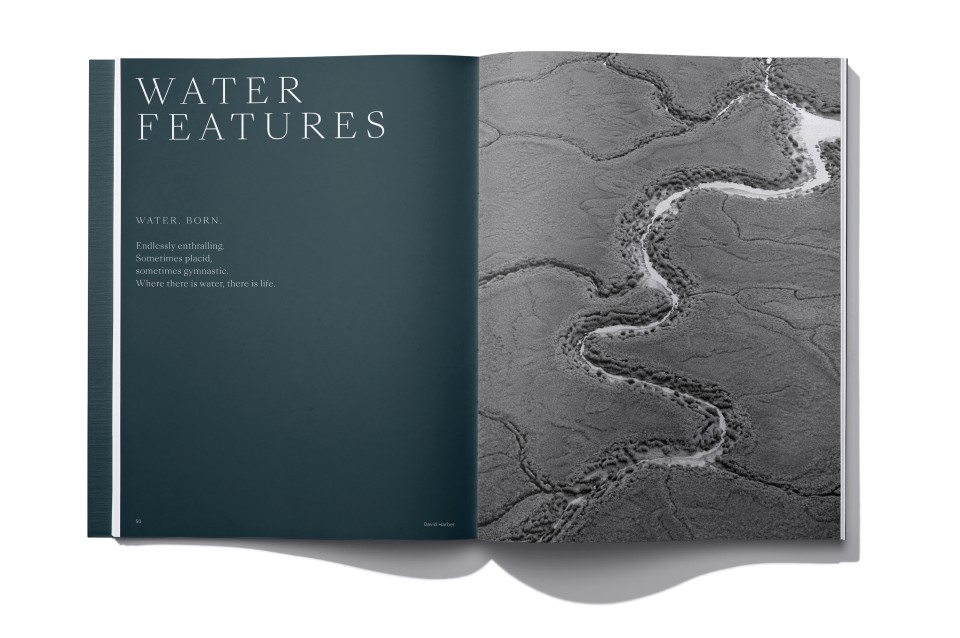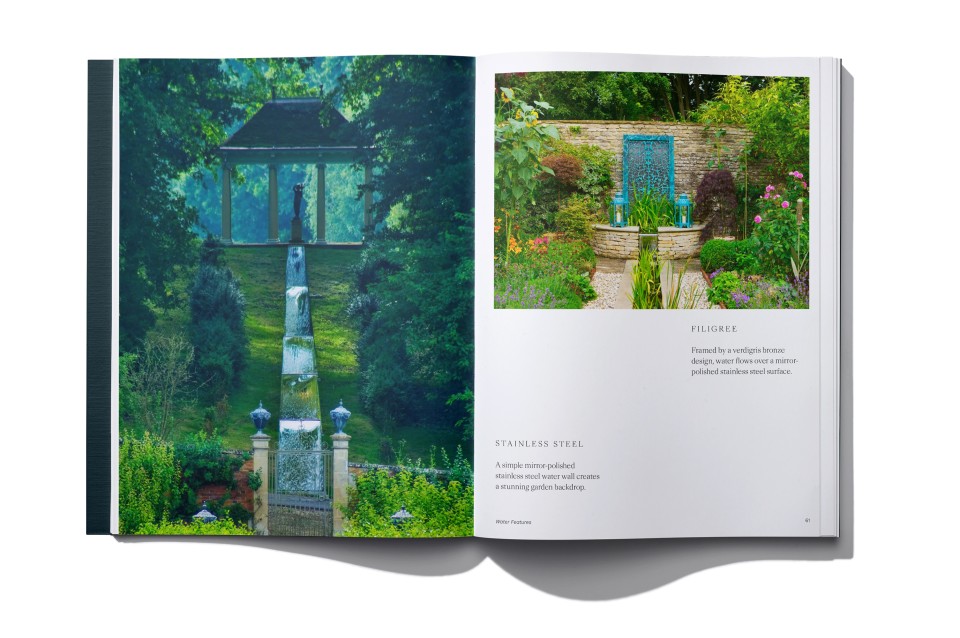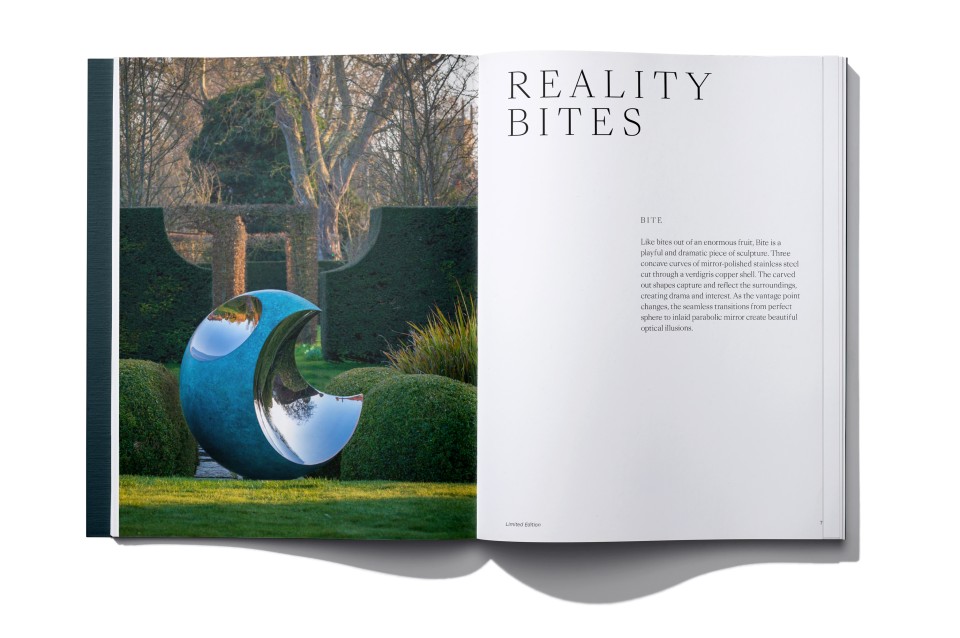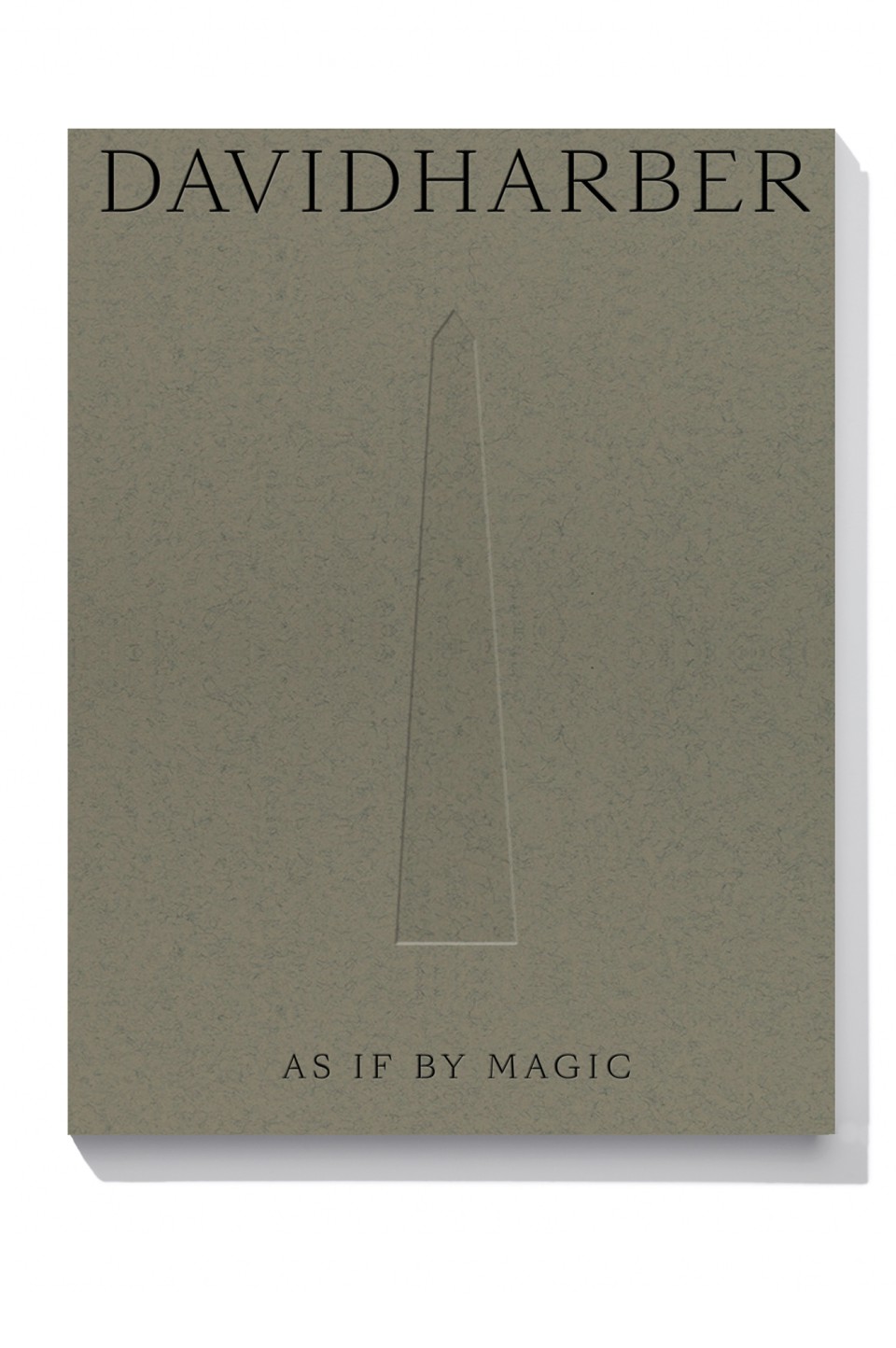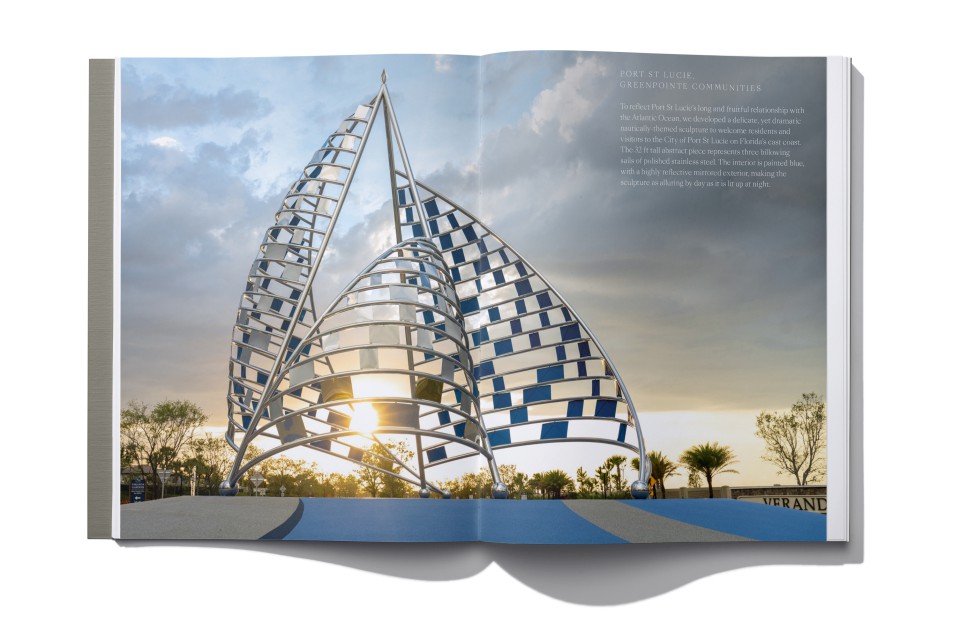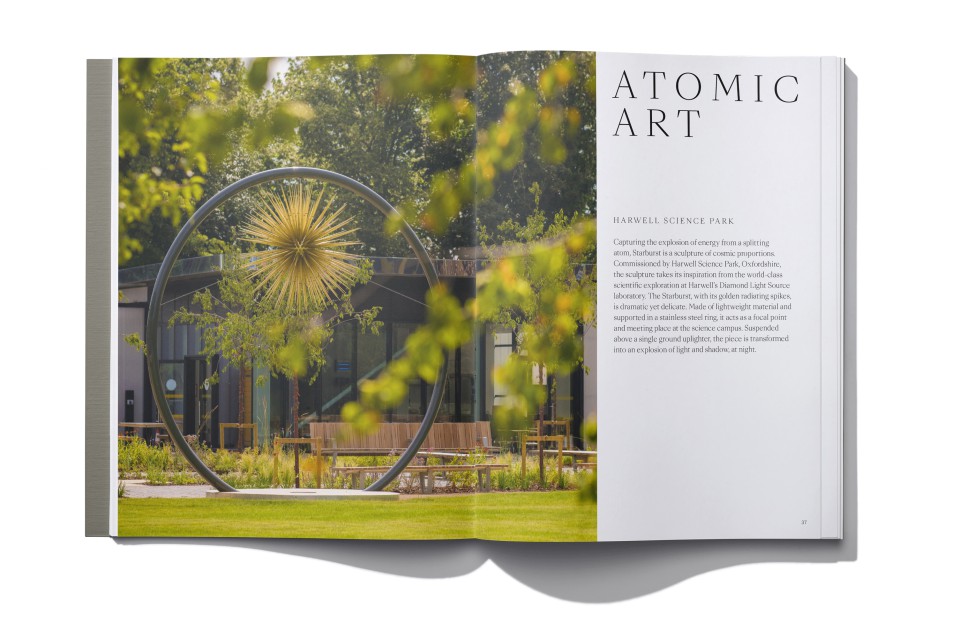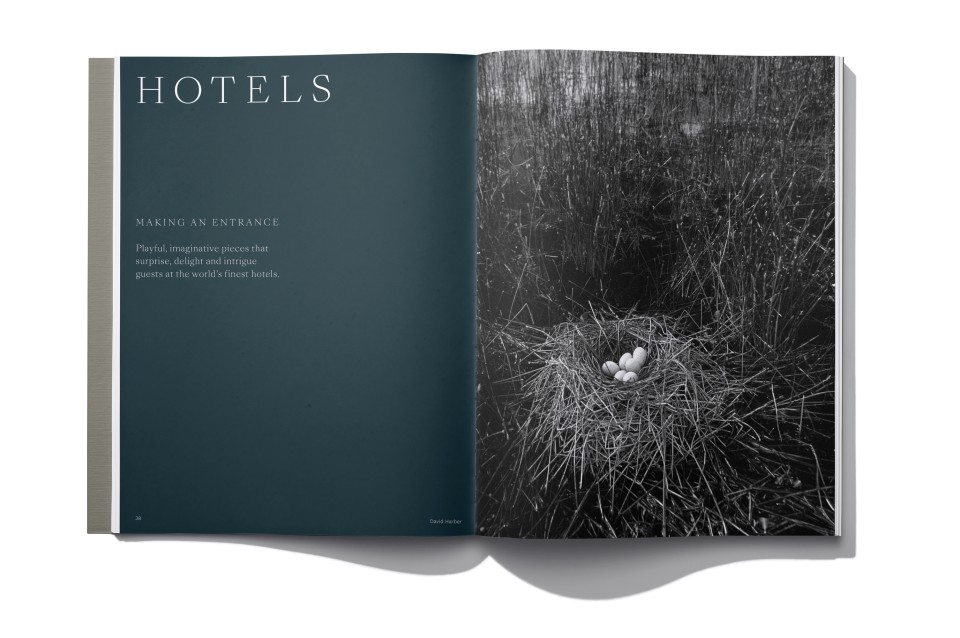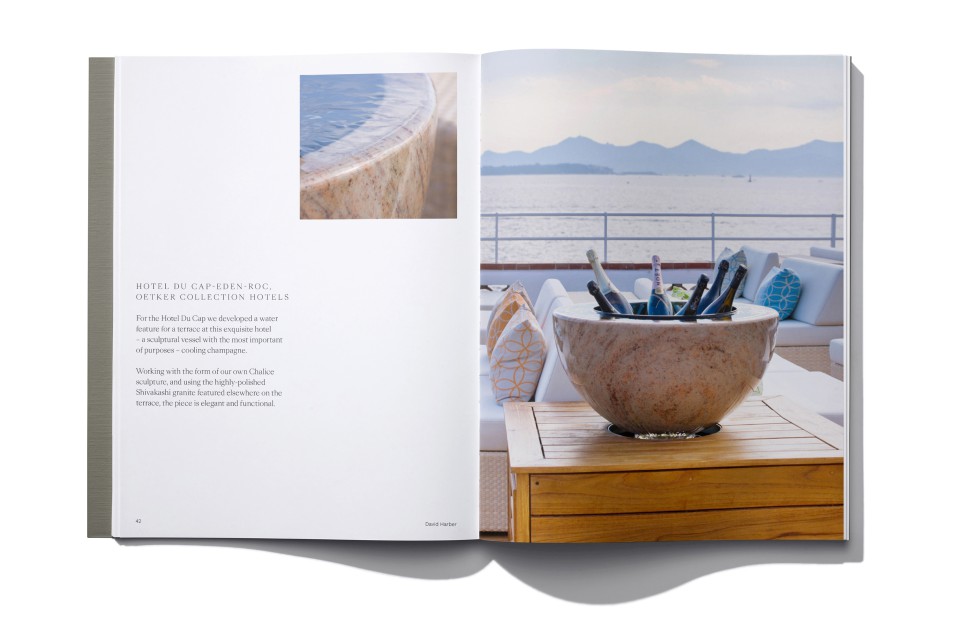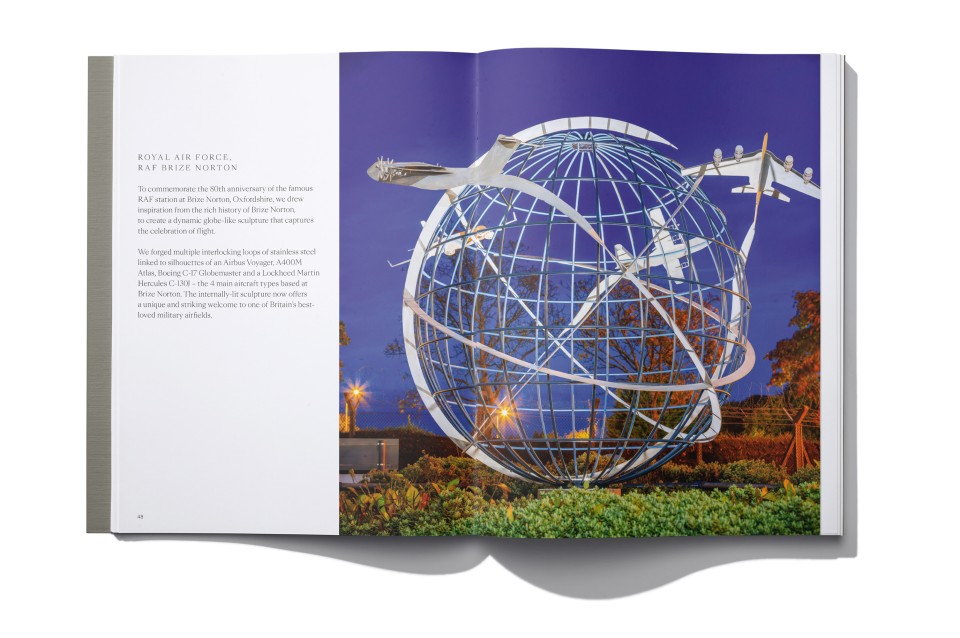How To Light Sculpture In The Garden
Lighting garden sculpture is an art in itself. When combined with subtle light, these three-dimensional works of art can be transformed into captivating focal points that inspire and intrigue. As well as making sculptures more visible, the right type of light can enhance the shape, texture and form of sculptures, creating a more immersive viewer experience.
“The interplay of light and shadow, rich in symbolism, reflects nature’s interaction with its surroundings. As well as adding depth, light invites viewers to explore the sculpture from different angles, revealing hidden nuances and symbolic meanings. By dusk, it allows the artwork to adapt, and it brings new life to the piece after dark.”
David Harber
Choosing the best light source for your sculpture involves more than illumination. It’s about complementing the style of the artwork and the character of the garden. Many of David Harber’s sculptures incorporate lighting design, and our ethos is to use outdoor lighting in a subtle way to create gentle and sophisticated illumination, which feels harmonious within the natural environment of a garden or outdoor space.
Here, we explore the different lighting options for outdoor sculpture, and include examples of artworks with outdoor lighting from the David Harber collection.
Five key factors to consider when lighting outdoor sculpture
Different materials interact with light differently
Stone, steel, copper and bronze all reflect and absorb light in unique ways. A mirror-polished, stainless-steel sculpture, such as Torus might gleam under accent lighting, while a stone piece such as Dark Planet, benefits from soft, diffused lighting that highlights its texture.
Less is more and don’t ignore the beauty of shadows
Restraint is key to well-lit sculpture. Too much, and you run the risk of masking the subtle intricacies of the artwork. Gently lit sculptures also create the best shadows, which can add depth, drama and a sense of mystery to a sculpture, as well as enhancing the three-dimensional qualities of the piece.
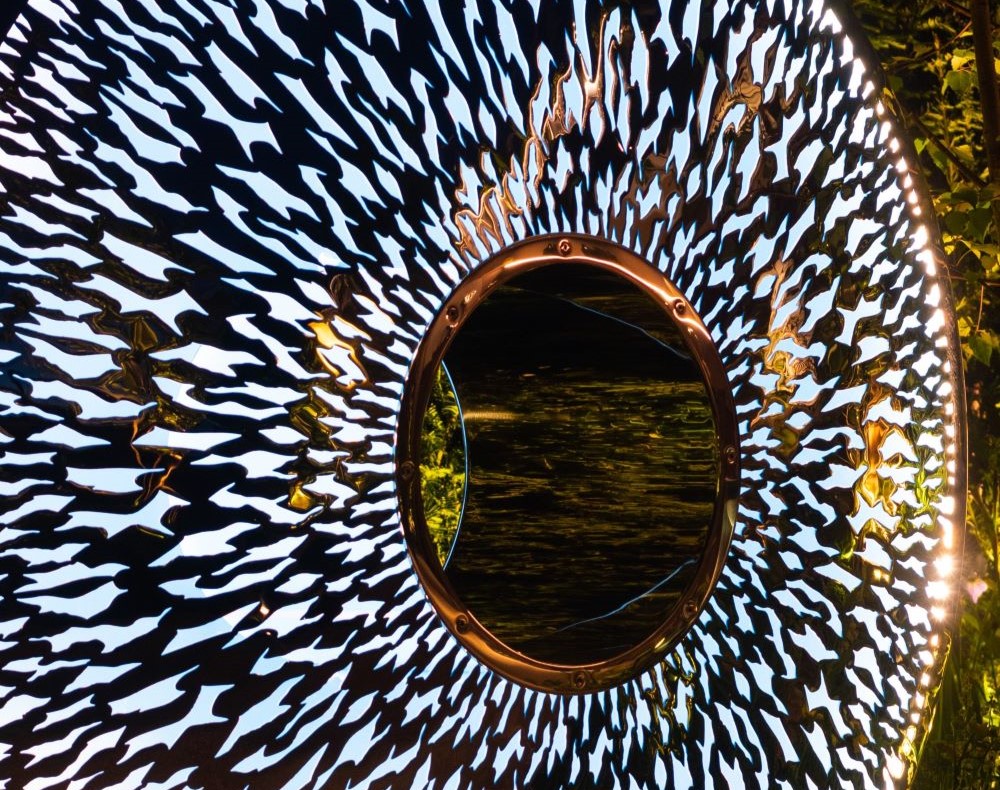
Iris Torus sculpture glows at night, illuminating stainless steel cutaways in its form.
Don’t forget the impact of natural light
Daylight changes throughout the day and seasons, affecting how your sculpture is perceived. Before placing a sculpture in any outdoor space, consider how the sun interacts with the piece at different times to avoid causing glare from direct light and to make sure artificial lighting will complement rather than compete with it.
The color temperature of the light matters
The Kelvin scale is used to measure the colour of light. A lower Kelvin value will appear warm whereas a higher Kelvin value will emit a cooler light. Cool white LED bulbs can bring out crisp details in modern pieces, while warm, ambient light is better suited to organic or classical designs. Choosing the right color temperature of your LED lights ensures the sculpture feels harmonious with its surroundings and maintains the intended mood for the space.
Get practical and plan ahead
Think about how your lighting system will be powered – whether it’s through mains electricity, solar or battery-powered – and consider how energy-efficient the bulbs are. Safe, discreet and weatherproof lighting fixtures are essential for both aesthetics and functionality in outdoor settings and you will need a qualified electrician to make any necessary connections.
The difference between integrated lighting and separate lighting
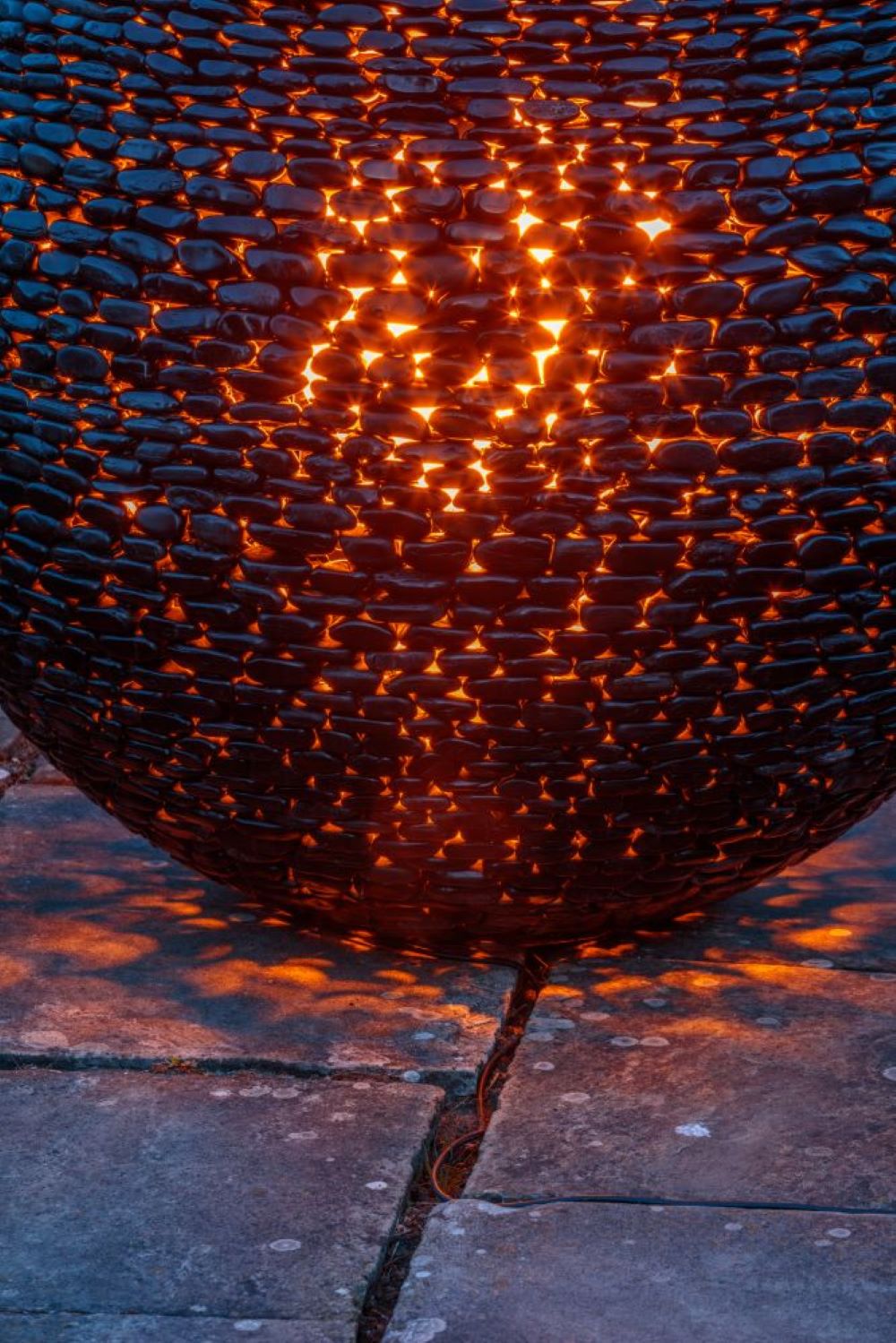
Dark Planet has an irresistibly entrancing effect at nighttime as light seeps through the fissures between its stones.

As darkness falls, the Mimeo Cascade fountain's own lights bring out the stunning visual of the water cascading down its tier.
The style of lighting fixture you choose will significantly influence how a sculpture is illuminated. It can shape the mood and visual impact of the sculpture within the space.
Integrated lighting, often built into the base or body of the sculpture, creates a sleek, minimalist look while providing focused accent lighting to illuminate special features or textures in the material. Separate lighting such as spotlights or beams of light offer flexibility in positioning, enabling techniques like uplighting or backlighting to achieve a more dramatic effect. A carefully directed beam of light can draw attention to specific angles or features.
How brightly should works of art be illuminated in outdoor spaces?
The type of light bulb and the intensity of the light are important factors to consider when lighting outdoor sculpture as brighter lights can create bold shadows and highlight textures, while softer lighting enhances subtle details. At David Harber, we believe less is more. Thoughtfully positioned, soft and subtle light generally works best for lighting art outdoors.
How David Harber illuminates sculpture
We put a lot of thought into choosing the right light for our pieces. We take into consideration the destination for the piece, and the desired mood or atmosphere the client is hoping to create. Some sculptures are better suited to being lit from within, while others benefit from a well-placed spotlight to highlight details or design features.
Dark Planet
Each Dark Planet is thoughtfully scaled to create a minimalistic yet impactful presence. By day, this iconic David Haber design seamlessly blends into the landscape, enriching the environment with its understated beauty, but as night falls, a transformation occurs – light penetrates the meticulously crafted gaps between the stones, emitting a gentle glow. This soft illumination creates a mesmerizing effect, casting delicate patterns of light and shadow. Whether it’s bathed in sunlight or shimmering under moonlight, the interplay between day and night highlights the unique features of each Dark Planet making it a captivating focal point in any setting.
Hydra
Leaf-like in its design, Hydra’s is crafted from verdigris bronze ‘fronds’ with hand-gilded gold edges. These multi-layered materials and surface finishes allow the piece to complement and adapt to its environment, while a spotlight at its center creates stunning shadows and highlights the gold detail at night.
There is definitely an image of the light in Flo in the website library, but I couldn’t find it to add here! We don’t actually have any images of Flo at night.
Flo
Flo’s captivating form invites playful interaction, encouraging viewers to explore its beauty from various angles. At the heart of FLO lies a subtle through-hole, highlighted in 24-carat gold gilding. By incorporating a light source into this space, the material and the feature itself is illuminated with a subtle glow during the day, while internal lighting unveils its three-dimensional elegance at dusk.
Mimeo Cascade
The combination of light and water is particularly special. Mimeo Cascade is designed with integrated LED backlighting to form a glistening curtain of light that illuminates this piece of art’s verdigris finish and the delicate lattice fretwork around the rim.
Interested in commissioning a sculpture? Light up our inbox
With over 30 years’ experience in designing, crafting and installing sundials, water features and sculptures in gardens around the world, we’d be delighted to help bring your sculptural dreams into reality. If you have a sculpture in mind or want to discuss creating a custom piece, email enquiries@davidharber.com and someone from the team will be in touch.
The magic of conversation
Whether you’ve decided on a piece, or you just want to sound out any aspect of our work, then please do get in touch.
